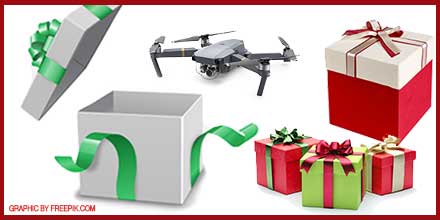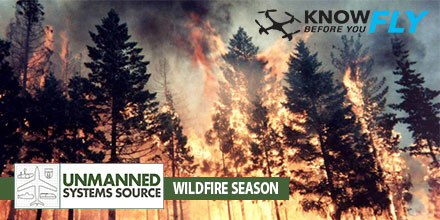 Before you fly, review the steps below to make sure your first flight is a success.
December 22, 2016
Before you fly, review the steps below to make sure your first flight is a success.
December 22, 2016 – Last Christmas the FAA estimated that over 1 million individuals received a drone as a gift. This year, that number is expected to rise.
The continued popularity of drones, coupled with increased selection and lower prices, means a fair share of holiday gifts will include a drone.
However, with that gift comes responsibility.
So, what exactly do first time flyers need to do before taking that drone out for a spin? Read on to find out.
Register your drone
Whether a drone is for commercial purposes or simply for fun, it must be
registered with the FAA. Any drone weighing between 0.55 lbs. and 55 lbs. must be registered. The registry helps create accountable flyers and safer skies.
Any time you fly, make sure you bring your registration information with you. Think of it like a fishing license, it doesn’t do you much good sitting at home. Registration costs $5 and it is a much cheaper than paying a fine up to $27,500 in civil penalties for flying unregistered. Unregistered drones, coupled with criminal penalties, are far steeper and could cost an operator up to $250,000.
Save yourself the stress and risk; take 5 minutes, spend $5 and
register your drone with the FAA.
Know the rules
The rules for hobbyist drone operators are quite simple:
- Keep it low – never fly above 400 feet
- Keep it in sight – keep visual contact of your drone at all times
- Keep it away – never fly over people
- Keep it legal – fly according to community-based guidelines
- Give notice – if you’re flying within 5 miles of an airport
As for commercial flyers, they have additional requirements and guidelines they must follow. Plus, there are tests they must pass and licenses they must secure before operating their vehicle.
Know your airspace
Those open skies aren’t as open as you may think. In fact, our airspace is crowded with all types of air traffic – commercial and recreational, alike. It is your responsibility to understand what is going on above and around the area you are flying your drone.
It is good practice to stay away from dense, urban areas. Dense areas are littered with trouble spots for drones: powerlines, pedestrians, private property, and moving vehicles…to name a few. Keep it safe, fly in deserted areas far from the city. Also, remember to stay at least 5 miles away from an airport.
Know the weather
That drone may not be as rugged as you think. Keep your equipment safe, take a moment to look at weather conditions. High winds? Low visibility? Air pressure changes? These factors, and more, can significantly impact your drone’s performance…as well as yours, as a novice flyer. For instance, flying in stiff winds can impact the life of your battery and, thus, decrease flight endurance.
Know your limits
As you may guess, it takes a lot of time and a lot of practice to become a proficient drone operator. Though the drone may come out of the box ready-to-fly, it doesn’t mean the operator has the skills to keep it from crashing.
If you’re just starting out, take your time. Get familiar with your drone. Read the manuals. Become comfortable in your operational controls. Practice take-off and landing before venturing out. Once you’re ready for a longer flight, keep it safe…follow the recommended guidelines.
As the skies continue to fill with drone traffic, the actions of individual operators are sure to determine the pace and integration of this technology into daily life. Follow the rules and enjoy!
 Before you fly, review the steps below to make sure your first flight is a success.
December 22, 2016 – Last Christmas the FAA estimated that over 1 million individuals received a drone as a gift. This year, that number is expected to rise.
The continued popularity of drones, coupled with increased selection and lower prices, means a fair share of holiday gifts will include a drone.
However, with that gift comes responsibility.
So, what exactly do first time flyers need to do before taking that drone out for a spin? Read on to find out.
Before you fly, review the steps below to make sure your first flight is a success.
December 22, 2016 – Last Christmas the FAA estimated that over 1 million individuals received a drone as a gift. This year, that number is expected to rise.
The continued popularity of drones, coupled with increased selection and lower prices, means a fair share of holiday gifts will include a drone.
However, with that gift comes responsibility.
So, what exactly do first time flyers need to do before taking that drone out for a spin? Read on to find out.

 "Know Before You Fly" Urges Operators to Stay Away from Wildfires, Adhere to Temporary Flight Restrictions
"Know Before You Fly" Urges Operators to Stay Away from Wildfires, Adhere to Temporary Flight Restrictions 